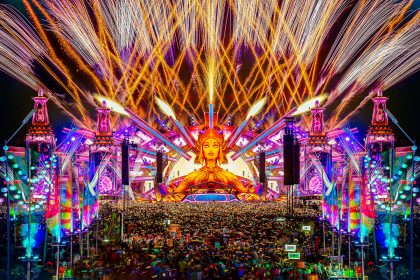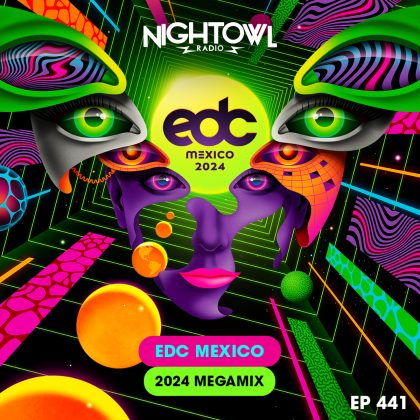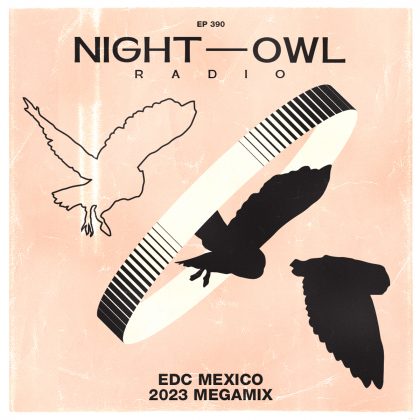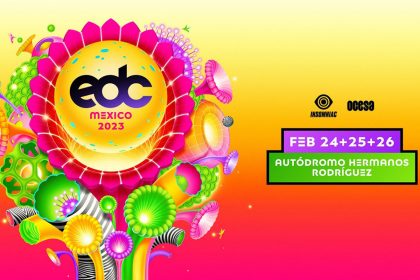EDSee Mexico: 7 Things to See and Do in Mexico City
Everyone traveling to Mexico City for EDC Mexico—happening February 28–March 1 at the Autódromo Hermanos Rodríguez—should be muy, muy excited. One of Insomniac’s most festive parties, the event takes place in a city with a vibrant culture, fabulous art, amazing food, and a deep history. Be sure to schedule some time outside the festival to play tourist around town.

In terms of safety, think of Mexico City as you would any other large metropolitan area. Use common sense, don’t be flashy, and avoid walking alone after dark. Exploring in a group will also ensure that everyone stays safe and happy!
Explore the EDC Mexico website, where you can get both single and two-day passes to the festival.
Here are some of the best places to see and experience while in Mexico City.
Uno: Zócalo

Zócalo is Mexico City’s main public plaza and the government center of the country (similar to the national mall in Washington, D.C.). Located in the heart of the city’s historic center, Zócalo is home to the Palacio Nacional, the Metropolitan Cathedral, and Templo Mayor, all three of which feature impressive architecture and offer public tours. Artist Diego Rivera’s mural depicting the span of Mexican history is a must-see inside the Palacio Nacional.
In the Aztec era, Zócalo was the main ceremonial center in the ancient city of Tenochtitlan. The outdoor square is one of the world’s largest public plazas, often hosting cultural events including parades and religious ceremonies. Native dancers and street vendors can often be found in the square, making Zócalo a great place to shop, eat, people-watch, and learn about both modern and ancient Mexican history and culture.
Learn more about Zócalo.
Dos: Palacio de Bellas Artes

Housed inside a fantastically opulent building incorporating elements of neoclassical, art nouveau, and art deco architecture, the Palace of Fine Arts is a renowned venue for various forms of high culture including dance, visual art, literature, music and theater. The Palace is home to the Mexico City Opera and hosts internationally touring art exhibitions, as well as various permanent installations. Murals by three of Mexico’s most famous muralists—Rufino Tamayo, José Clemente Orozco and Diego Rivera—appear on various levels of the Palace. (Fun fact: Rivera’s mural Man at the Crossroads was originally commissioned in 1933 for New York’s Rockefeller Center, but it was rejected because of its negative depiction of John D. Rockefeller. The Rockefellers had the painting destroyed, and Rivera recreated it at the Palace the following year.) Even if you’re not seeing a performance, the Palace is a stunning place to take a walking tour. Admission is free on Sundays!
Learn more about Palacio de Bellas Artes.
Tres: Paseo de la Reforma

Inspired by the elegant Champs-Élysées in Paris, Paseo de la Reforma is a wide avenue that traverses the heart of Mexico City. The tree-lined street is home to some of the city’s tallest buildings, as well as a variety of monuments, public art and museums. Paseo de la Reforma is an excellent destination for dining and shopping and can be effectively explored on foot or by bike.
Learn more about Paseo de la Reforma.
Cuatro: Lucha Libre at the Arena México

Lucha Libre, a form of professional wrestling rooted in Mexico, is as much a theatrical production and cultural experience as it is a sporting event. Much like many EDC attendees, the luchadores sport elaborate costumes and whimsical masks! Opponents take each other on in the ring with matches that often incorporate a great deal of staged, dramatic flair. The event takes place in Arena México—the “cathedral of Lucha Libre”—which is easily accessible via the Balderas metro station. Lucha Libre tickets are roughly $5, and events are typically attended by a crowd of thousands.
Learn more about Lucha Libre.
Cinco: Museo Nacional de Antropología

Museo Nacional de Antropología is Mexico’s most visited museum, and for good reason. Its massive collection is housed on two floors, with the dozen ground-floor halls featuring artifacts from pre-Hispanic Mexico, and upper-level halls showcasing the modern lives of Mexico’s indigenous descendants. The museum contains archaeological and anthropological artifacts from pre-Columbian Mexico, including the 16th-century Aztec statue of Xochipilli and giant stone heads of the Olmec civilization that were found in the Mexican jungle. The museum also has a large pond and extensive outdoor gardens. Don’t fret it you don’t habla español; much of the museum’s explanatory text is translated into English.
Learn more about Museo Nacional de Antropología.
Seis: Museo Frida Kahlo

Often referred to as the “blue house” because of its deep blue exterior walls, the Frida Kahlo Museum features the art of the renowned Mexican artist. Built by Frida’s father three years before her birth, the ten-room building is where Kahlo was born and raised, lived with her husband Diego Rivera for a number of years, and died in 1954. Museo Frida Kahlo features a wide range of art by Kahlo and Rivera, along with a collection of their personal memorabilia and works by other artists, including Paul Klee. The museum gets busy on weekends, so be sure to arrive early to get your art on.
Learn more about Museo Frida Kahlo.
Siete: Teotihuacán

If you have time for a day trip, make the trek to the ancient city of Teotihuacán to see some of the largest pyramids of the pre-Columbian world. Also known as the City of the Gods, the site is roughly 30 miles outside Mexico City and features the impressive Pyramid of the Moon and the even larger Pyramid of the Sun—which, at 246 feet tall, is the third largest pyramid in the world. Buses to Teotihuacán leave from Mexico City every 20 minutes from Terminal Autobuses del Norte. One-way bus tickets run approximately $4.
Learn more about Teotihuacán.





